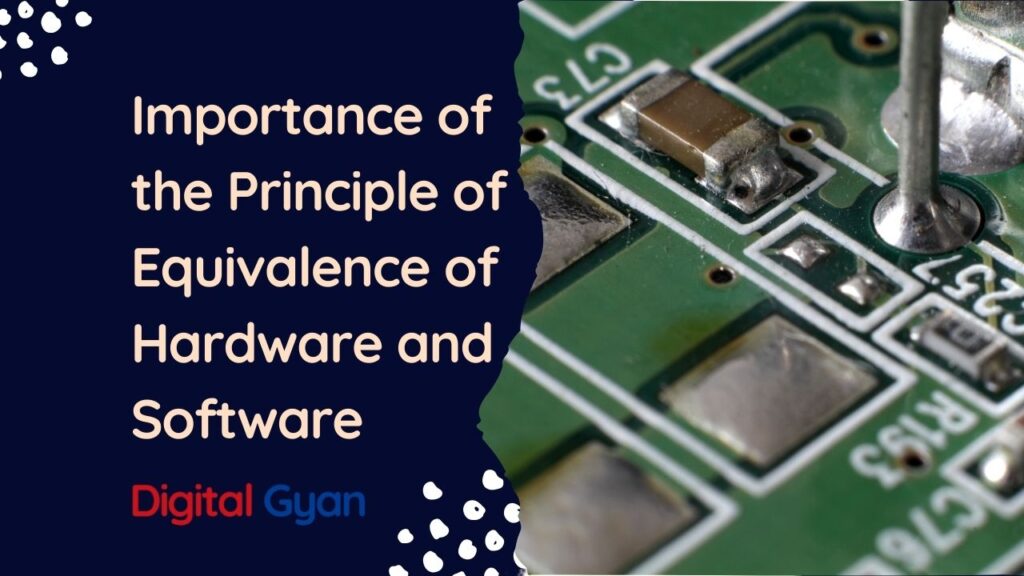Importance of the Principle of Equivalence of Hardware and Software
The principle of equivalence of hardware and software is a principle that states that hardware and software are equivalent, and anything that software can do, can also be done by the hardware. This means that the hardware is not more important than the software but equally important.
This principle was first introduced by John McCarthy in his paper “The Principle of Software Reliability” in 1967. He said that “the reliability of a system should be judged based on its software rather than on its hardware.” McCarthy’s law is heavily criticized for being too broad and not always agreeing with the traditional testing of software reliability. Other experts say that “software reliability” should be replaced with “software dependability.”
Principle of Equivalence of Hardware and Software
As per the principle of equivalence of hardware and software, “Any task done by software can also be done using hardware, and any operation performed directly by hardware can be done using software assuming speed is not a concern.”
It says that the hardware and software are almost equivalent. Anything done by software can also be implemented using hardware, and anything done via hardware can also be simulated or done through the software.

The Significance of the Principle of Equivalence of Hardware and Software
The importance of the principle of equivalence of hardware and software should be clearly understood. It is generally said that the use of hardware in software design and implementation can increase product productivity and save the cost of software development.
It helps in system design and implementation, especially on computers. Computers generally comprise two elements, i.e., software and hardware, where hardware is considered the body and software as the soul. So, the principle gives proper guidance in designing and developing systems, especially computers.
It helps minimise many factors such as cost, size, processing, and functionality, to mix and match the hardware and software to devise a yielding device. It helps to keep a perfect combination of hardware and software so that the resulting computer or device can function at its best performance, including reasonable cost and size.
It gives designers a flexible way to combine the hardware and software, keeping the beneficial aspects of both without altering cost, size, performance, or the option of change where technology is changing rapidly. Sometimes hefty and troublesome codes that can cause delays can be replaced with hardware portions that are quite huge and impact the system performance can be interchanged.
The principle also explains the evolution of software: why invest so much in software when everything can be done using hardware? The simple answer is that hardware is more costly and tedious to replace than software.

